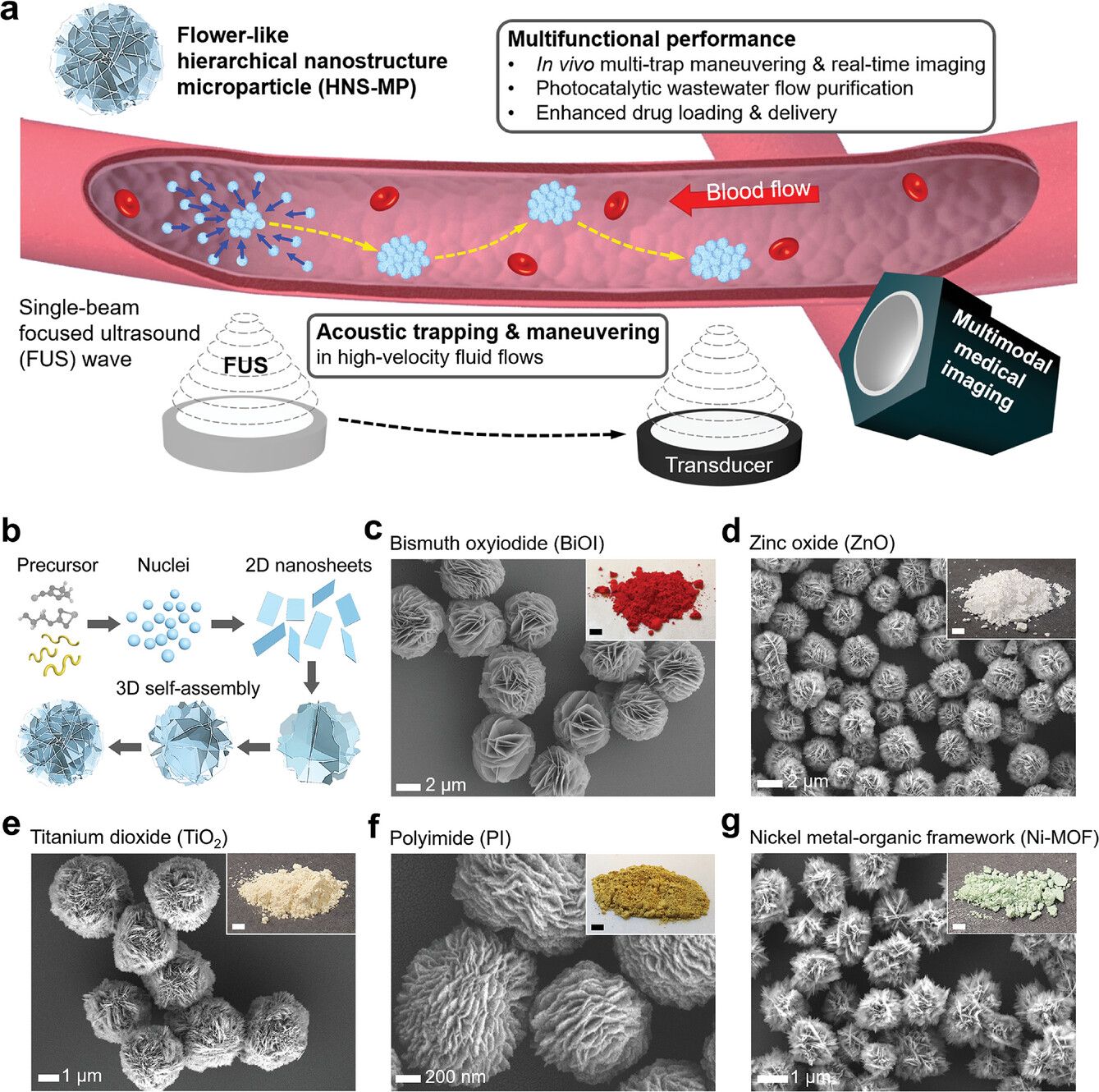These microscopic "flowers" deliver anticancer drugs with unmatched precision 💊
Published by Cédric,
Article author: Cédric DEPOND
Source: Advanced Materials
Other Languages: FR, DE, ES, PT
Article author: Cédric DEPOND
Source: Advanced Materials
Other Languages: FR, DE, ES, PT
Follow us on Google News (click on ☆)
For decades, researchers and doctors have been attempting to solve a complex equation: how to deliver a drug precisely to its target while minimizing side effects? While conventional drug carriers have led to progress, they often lack versatility, precision, or reliability in tracking.

a) Conceptual illustration of flower-shaped hierarchical nanostructured microparticles (HNS-MPs) being acoustically manipulated in a dynamic flow for applications in microrobotics and medical imaging.
b) Diagram of the hydrothermal synthesis process for HNS-MPs.
c−g) Scanning electron microscopy (SEM) images of five different types of HNS-MPs, with inset photographs showing each type produced in bulk (scale: 5 mm).
A new concept has recently emerged thanks to work conducted by ETH Zurich. Flower-shaped particles, slightly smaller than red blood cells, meet several crucial criteria. They carry large quantities of active molecules, can be guided by ultrasound, and are easily detectable within the body.
The key to their efficiency lies in their ultrathin and densely packed petals. These petals offer a substantial surface area with pores just a few nanometers wide, capable of absorbing a large quantity of drugs. At the same time, these particles scatter sound waves, facilitating their visualization through acoustic or optical imaging.
Unlike microbubbles used until now, these solid particles demonstrate a significantly better capacity for carrying treatments. Tested in the lab with an anticancer drug, they have shown great potential, particularly when injected into the bloodstream of mice and precisely guided to a predetermined location using focused ultrasound.
Paul Wrede, a member of the research team, highlights a major breakthrough: this is not merely about letting these particles flow with the bloodstream. They can be controlled in real-time, offering an unprecedented level of precision.
Made from materials such as zinc oxide or organic composites, these particles can also be customized based on clinical needs and the imaging techniques available. However, their unique shape is the central element of their functionality.
The researchers are already envisioning promising applications. In cardiovascular medicine or cancer treatment, these microscopic flowers could target areas such as tumors or clots with unparalleled efficiency, significantly reducing the risk to healthy tissues.
Before hoping for human application, further animal testing is necessary. These steps will ensure the safety and efficacy of this technology before its potential integration into clinical practice.